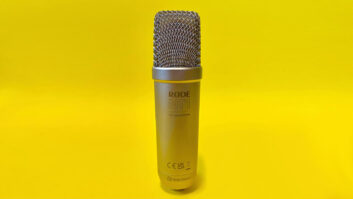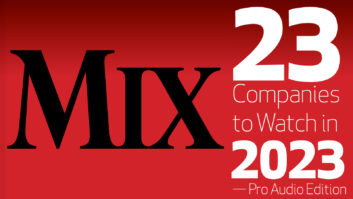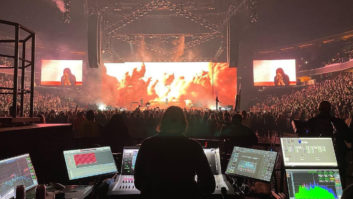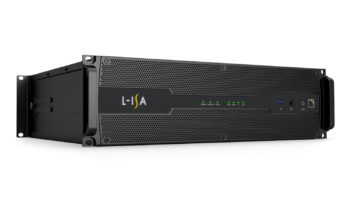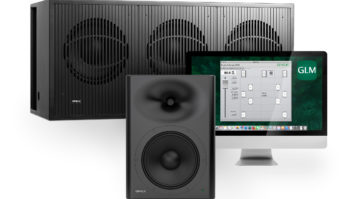Houses of Worship have numerous digital desks
to choose from these days. NorthRidge Church
in Saline, MI opted for a Yamaha M7CL.by Clive Young.

Only a few years ago, digital live-sound consoles were a conundrum for the HOW marketplace. There was no question that they were here to stay, but the desks were complicated, bulky and perhaps most challenging, expensive. These days, there are mixers available at different price points, sizes and levels of complexity—plus there are a few offerings for those who want to stay in the analog realm.
While the choices are plentiful, every brand has certain models that have resonated with the HOW market—Yamaha’s M7CL and LS9; Midas’ Pro6; Allen & Heath’s iLive T112 with an IDR48 rack; Avid’s Venue Profile; DiGiCo’s SD8; Harman’s Soundcraft Vi and Studer Vista consoles; and APB-Dynasonics’ ProDesk series.
Thousands of HOWs use foldback, but is the number of facilities with dedicated monitor consoles growing? “In some larger churches with paid tech staff, yes,” reported Daniel Craik, house of worship marketing manager for Yamaha Commercial Audio Systems. “In the mid-level to smaller churches, not so much. We find that most churches that haven’t already done so, are moving to the ‘quiet stage’ approach, eliminating instrument amplifiers and stage monitors, and using in-ear monitor systems from people like SamePage, Shure or Aviom. The fact that these manufacturers have MY interface cards that can be used in a Yamaha console makes the installation and routing of these systems simple.”
Even as digital desks have become common sights, analog desks continue to thrive in many sectors, including the HOW market, in part due to their accessible designs and price points. Charles Augustowski, sales/product manager at APB-Dynasonics, noted, “We see a number of HOWs that went digital returning to analog consoles after realizing that unless they have a full-time engineering team, volunteer operators have an easier time producing good results with a well-designed analog console. Our new ProDesk series is most suited to HOWs where high-quality performance is required at a relatively low cost.”
Indeed, the sound and simplicity associated with analog desks remain touchstones within the HOW console community. “The XL8 and Pro6 were designed to be very ‘analog’ in their operation,” said John Oakley, general manager, Midas and Klark Teknik. “This is relevant where volunteer operators are involved. The Pro6 is proving interesting to customers and we think our new announcements at InfoComm will generate even more interest.”
While manufacturers offer mixing consoles at different levels and price points to accommodate a variety of customers and budgets, series of products can also provide a unified experience for end-users, as Avid’s senior market specialist for live sound, Robert Scovill, noted: “The install at Saddleback Church in Lake Forrest is a pretty cool example; they have both an FOH and monitor console situated at the front-of-house position, and engineer John Wilson handles both duties. In addition, they’ve deployed SC48s in smaller rooms and are taking advantage of the fact that Venue products offer a single software package for all mixing platforms as well as continuity in the mixing experience. Users in smaller settings get credible console experience that could translate directly into being able to work in the main sanctuary. That’s a powerful model for any church that nurtures and develops its staff internally.”
If the HOW community has one message for console manufacturers, it’s probably a kinder, more uplifting version of the old design principle, “Keep it simple, stupid.” And to be fair, everyone interviewed for this article acknowledged the need for straightforward products.
“Ease of use and intuitive operation are major criteria for HOWs,” said Keith Watson, vice president of marketing at Soundcraft Studer, adding, “We’ve also found that users in HOWs place a high value on settings like cue and scene recall that simplify the mixing process, and these features are available in our Si, Vi and Vista Series consoles. In addition to an easy-to-learn user Interface, we provide free or web-driven tutorials, DVDs and booklets which can be downloaded from soundcraft.com.”
Jack Kelly, president of Group One, DiGiCo’s U.S. distributor, also stressed the importance of training, explaining, “We ideally like to provide one day of training for our customers, and are always available by phone to help out. A big concern for all technology providers is the turnover of volunteer positions at HOW facilities. DiGiCo SD Series consoles operate virtually the same across the range, so learn one and you can mix on any. Additionally, the layout and feature set are intuitive, so in a short time, you can use the console as a basic mixer before getting deeper into snapshots, macros, effects and so on.”
A key factor that HOWs in the market for a desk have to consider, however, is that not all users are beginners—as Dave Lewty, national sales manager, Allen & Heath iLive Series, pointed out: “HOWs generally have a volunteer crew as well as an experienced engineer, so the console has to be flexible enough to satisfy all parties. As a result, we’re seeing multiple installations happening every week, especially with the iLive T series. Walking up to it from a user’s point of view can be a simple process, plus we have user-programmable soft-keys—you can recall preset scenes like ‘Sunday service’ or ‘choir rehearsal,’ and use ‘password protect’ to lock out inexperienced users from certain functions if needed.”
Churches are all about spreading “the good news,” and lately, they seem to have some for the installation market. Lewty observed, “The install-upgrade section where HOWs are replacing older sound systems and consoles is noticeably speeding up.” Group One’s Kelly concurred, noting, “We’ve seen a rebound in 2010 as projects that had been delayed are back on and there seems to be some available capital for new construction as well.”
Yamaha’s Craik concluded, “After talking to many pastors and worship leaders, things are looking better this year. We are seeing some projects that have been on hold move forward, and the future looks a little more predictable.”
